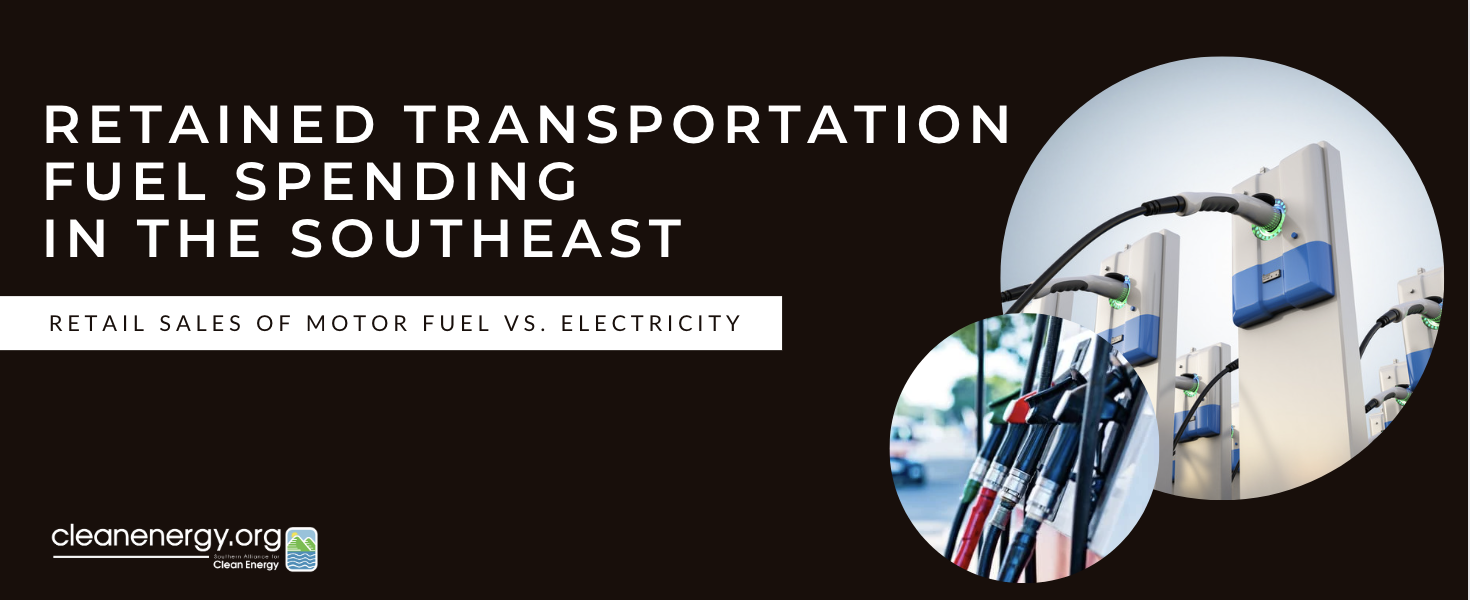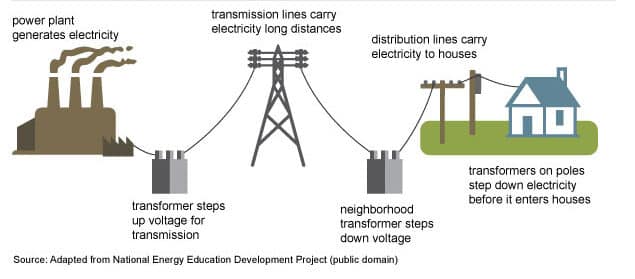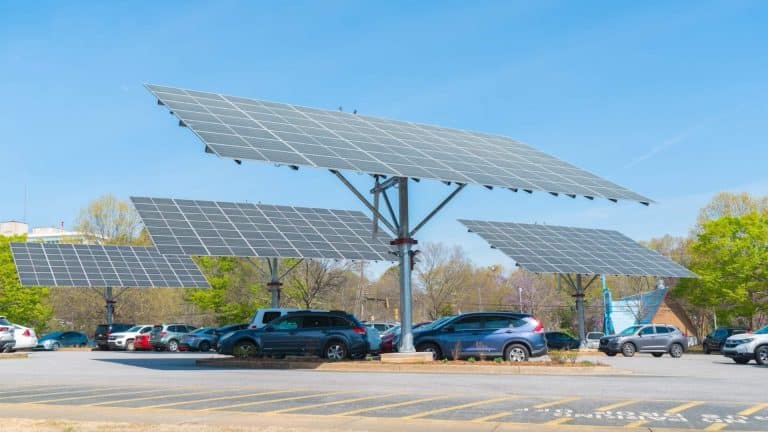The shift to electric cars, trucks, and buses is a prime example of how the Southeast can scale climate solutions and grow local economies. When drivers and fleet operators buy gas or diesel in the Southeast, a portion of every dollar spent at the pump leaves to enrich the fuel supply chain outside the region. The leftover portion of every dollar spent that remains in-region is what we call “retained fuel spending,” and can be used as a measure to show the economic power of switching from spending money on fossil fuels to electricity.
We examine this stark difference between petroleum-powered and electric-powered transportation in our updated whitepaper, “Retained Transportation Fuel Spending in the Southeast: Retail Sales of Motor Fuel Vs. Electricity.” In the analysis, SACE estimates that 23% of every dollar spent on gas and diesel remains in-region. But the story flips when we purchase electricity to power vehicle travel instead, with 71% of every dollar spent to charge electric vehicles (EVs) retained to strengthen state economies while saving consumers money. And these retained fuel dollars add up – if every car, truck, and bus were electric today, the region would get a $60 billion boost to the economy annually. Read on below for more of our findings.

[button color=”blue” url=”https://cleanenergy.org/wp-content/uploads/Retained-Transportation-Fuel-Spending-in-the-Southeast-1.pdf”]Download the Report[/button]
What we found: $60 Billion on the Table
Southeast consumers currently spend approximately $103 billion on gasoline and diesel fuels in a single year. After paying for the imported and finished fuel products, only a little more than one-quarter of gas and diesel sales – approximately $28 billion – is estimated to be retained in the region. This is primarily because the region has nearly no oil production, refining operations, or associated infrastructure. The $28 billion that is retained includes state taxes and fuel service provider revenues, but with electrification, we can retain even more.
The massive economic benefit of shifting to electric vehicles comes from two places:
- Electricity is a lot cheaper than gas and diesel. If all of the region’s cars, trucks, and buses were electric today, Southeast consumers would spend far less to drive the same number of miles. Electrifying vehicle travel would reduce consumer transportation fuel spending by $52 billion annually.
- More electricity spending is retained in the region. Over 70% of spending on electricity to power electric vehicles would remain in the state where the electricity is sold, equaling $36 billion retained. Therefore, electrifying transportation would retain an additional $8 billion when compared to the region’s current spending on motor fuel.

Add the $52 billion not spent on transportation fuel by consumers and fleet operators by switching from gas and diesel to electric vehicles to the additional $8 billion retained in the regional economy by buying kilowatt hours of electricity instead of gallons of gas and diesel, and you arrive at $60 billion in retained fuel spending on the table annually.
How charging with electricity contributes to the local economy
The picture for why very little gas and diesel expenditures stay in-state is relatively clear: there is not much in the way of crude oil production or refining operations in the region, and they’re significant components of the price we pay at the pump. But the infrastructure associated with electricity is less familiar to most people, so it’s important to break down how the high portion of retained spending for electricity results from how energy is produced, delivered, and regulated.
Power plants generate electricity, and generation costs are the largest component of the retail price of electricity. Some generation costs, such as operations and maintenance, help keep dollars in-state because they rely on local labor and pay taxes on local land. Another part of paying for generation is fuel cost. Coal, gas, and nuclear power plants use fuel to generate electricity, and most of those fuels are imported from out of state. This still represents an opportunity for the local economy – resources such as wind, solar, and energy efficiency do not require fuel to produce power, and many utilities have pledged to rapidly make the transition to renewables.

Two other major components of electricity infrastructure – transmission and distribution – are primarily localized to the state where the electricity is consumed and are assumed to contribute to money retained in-state. Distribution lines are maintained locally, and while electricity can travel across state lines via transmission lines, it does so infrequently and to neighboring states rather than traveling through multiple states or across the country like motor fuels do. For a more detailed breakdown of how these costs are treated, read the full report.
Multiple drivers have also historically kept electricity prices from the erratic swings we see in gas prices, thus making it more affordable to travel. One is that electric utilities ideally rely on more than a single type of fuel, and the commodity markets for those fuels have historically been less volatile than those for motor fuels. Utilities are also subject to a regulatory model where spending and pricing are overseen and regulated by state, local, or even federal entities, which has historically resulted in a slow (but sadly still steady) climb of retail prices when compared to gas and diesel prices.
There’s so much to gain from electrification
The Southeast has much to gain by distancing itself from imported gas and diesel, and embracing locally-generated electricity to power transportation. Such an embrace will result in even more significant payback over time as the region ramps up utility-scale and distributed solar and wind generation, which do not require fuel to run, thus allowing even more dollars to be retained and invested in local economies.
We conduct analyses like this to inspire policymakers, utility regulators, and industry stakeholders to broaden their views of transportation electrification costs and benefits. Another reason is to stimulate further discussion and research. For example, ongoing research regarding EV jobs and investment show that Alabama, Georgia, Florida, North Carolina, South Carolina, and Tennessee represent approximately 18% of the nation’s population, yet make up an outsized portion of EV-related jobs and supply chain investments at 34% and 42% of the nation’s total respectively.
State policymakers and utility regulators need a full and clear picture of what is at stake. And they must act by ensuring effective policies and regulatory reforms to foster strong Southeast electric car, truck, and bus markets. Strong EV markets will pay major dividends by retaining billions of dollars in transportation fuel spending and supporting continued regional EV industry job growth and investment.
Electrify the South is a Southern Alliance for Clean Energy program that leverages research, advocacy, and outreach to promote renewable energy and accelerate the equitable transition to electric transportation throughout the Southeast. Visit ElectrifytheSouth.org to learn more and connect with us.




